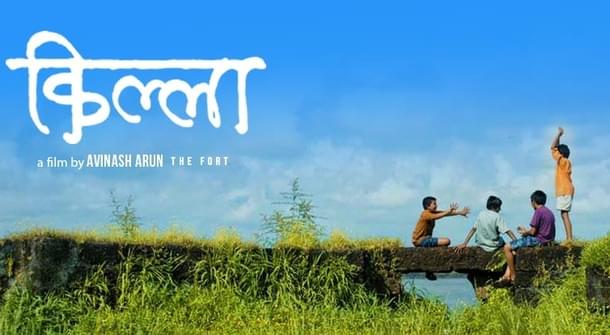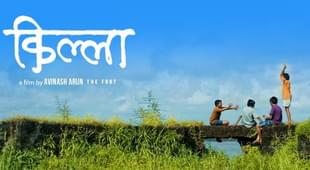Culture
No Child’s Play - The Abysmal State of Children’s Films in India
Gautam Chintamani
Nov 20, 2016, 06:26 PM | Updated 06:26 PM IST
Save & read from anywhere!
Bookmark stories for easy access on any device or the Swarajya app.


Considering the manner in which Indian film producers usually scurry around for a ‘U’ or Universal certification from the Central Board of Film Certification (CBFC), which would allow children to view the film, one would be fooled into believing that children form an integral part of the ticket-paying audience. One of the major reasons why producers perhaps try as hard as possible to garner a U certification or even a U/A certificate that makes a film fit for children below age of 12 years under parental guidance only, is that it would let parents get children to the cinema hall without the worry of leaving them back home. In some states such as Tamil Nadu up until 2014 a ‘U’ certificate was also one of the criteria amongst others for the state to consider granting a 30 per cent exemption on entertainment tax for films.
The next logical conclusion then should be that the genre, too, somewhere would make for a good business proposition but unfortunately, that is not the case. While in the recent past films such as Bhootnath (2008), Stanley Ka Dabba (2011) and Killa (2014) might have enjoyed critical acclaim and also made a decent amount at the box office, children films are not considered ready money spinners. This is simply because they do not make great money as - (a) they do not attract great budgets as most of them cannot get stars attached,(b) not much can be spent on publicity as the entire budget is too low - and the combination of the two results in well…children films not being as economically viable proposition as other genres. In fact, if seen closely the children films genre is in an abysmal state not just commercially but also thematically.
When it comes to children films in India the entire argument hovers around the notion of what the adults ultimately want the children to see or say. In other words, unlike catering for a very real audience that exists out there, children films are often imposed with an adult’s understanding of what children are like rather than allowing it to grow in an organic manner. At a children film festival filmmaker Nagesh Kukunoor, who has regularly used children in important roles in his films that are not just limited to being children films in the true sense of the word, noted that whenever someone talks about children films in India, the first thing that comes to mind is a “very dumbed down, very stupid film which is ‘ha ha, hi hi’…” Kuknoor was one of the first filmmakers in India who tried to go mainstream with a children film when he made Rockford (1999), a coming of age film set in a boarding school.
Kukunoor had burst upon the scene with his indie runaway hit Hyderabad Blues (1998) and his decision to follow it up with Rockford where the protagonist was a thirteen-year-old boy who comes to terms with the trials of growing up in an environment that could very well be the microcosm of the world that awaited him was intriguing, to say the least. Up until then children film meant Masoom (1983), where fate makes a family man (Naseeruddin Shah) bring his son from an extramarital into his home or Mr. India (1987), where a aam Hindustani Arun (Anil Kapoor), who runs an orphanage becomes a superhero and avenges the death of one of his favourite kid or if one really stretched it then Tapan Sinha’s Safed Haathi (1977) where an orphan Sibu befriends a magnificent white elephant, ‘Airawat’ who saves him from a ferocious tiger.
In Kukunoor’s Rockford Rajesh Naidu (Rohan Dey), the teenager falls in love with Malthi (Ulrika Krishnamurti), the girl from the all-girls school next door, lusts after his teacher Miss Lily Vegas (Nandita Das) and along with his friend Selva (Kailash Athmanathan) also gets to know about things like masturbation. It’s intriguing how Kukunoor managed to mark a difference between children and child-like, the latter being an ingredient that is often missing from children films in India.
It was around the same time when the perception of children film was undergoing a major transformation across the globe with Larry Clark’s Kids (1995) that shocked the world when it first came out. The film was probably the very first time where the young protagonists that included the likes of Chloë Sevigny, Justin Pierce, Rosario Dawson, and Jon Abrahams, all in their film debuts and shown in their teens, were presented as un-child-like where their hedonistic behavior towards sex and substance abuse generated a massive controversy.
Released at the height of the AIDS epidemic of the mid-1990s in New York City the film’s characters were not the kind of the onscreen children that one was used to imagining and being a far cry from say a Kevin McCallister (Macaulay Culkin) of Home Alone (1990) or North (Elijah Wood) in North (1994) the antics of the protagonists in Kids caused much public debate.
Kids was dubbed as a “wake-up call to the modern world” about the nature of present-day youth in urban life by Janet Maslin in her New York Times review but how many children would actually be allowed to see the film? Even after two decades, the film remains one that is still talked about in hushed tones. Similarly today a film like Bang Gang (A Modern Love Story) (2016) that paints an intimate snapshot of the modern life of privileged teens where Alex, who while his mother is abroad for work, organizes sex parties (called bang gangs) and recreation drug use with other teenagers, might ring true but can it really be considered children film?
In his insightful book on the subject, Children Films: History, Ideology, Pedagogy, Theory Professor Ian Wojcik-Andrews makes an interesting observation while talking about the “idea of cinema for children”, where he says “there are films aimed at children, films about childhood, and film children see regardless of whether or not they are children film.” In this light two recent films Stanley Ka Dabba and Killa, a poignant film that looks at the concept of displacement, which in many ways is intrinsic to a child on a multitude of levels, are fine examples of how children films can strike a fine balance.
Of course, some would consider Taare Zameen Par (2007) and Chillar Party (2011) to be in the same category as well even though these were not meant for children in the truest sense. The former could somewhat be in the Masoom league where it has children at the core but is targeted at adults more and the latter, in spite of the presence of children tries to address something bigger. These films especially Killa with their narrative and execution manage to raise over otherwise a given facet of children cinema where in an attempt to universalize the theme the execution ends up trivializing it. The reality of the world that we live in, and by extension the world that a children film would occupy today, is far graver and sadly most films in the genre are at a loss to express this. Of course, one is far from suggesting that anything or everything should go keeping in mind the reality that children today exist in but is it not time that someone took children films as seriously as we take children.
Gautam Chintamani is the author of ‘Dark Star: The Loneliness of Being Rajesh Khanna’ (2014) and ‘Qayamat Se Qayamat Tak- The Film That Revived Hindi Cinema’ (2016)





